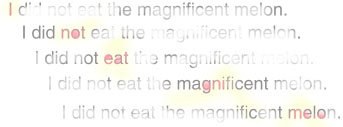

 |
Greg Kochanski |  |
Languages evolve and travel. They change with time and move with conquering armies, with trade, and with migrations. As a result, languages form families that share a common ancestor. The Romance languages (French, Spanish, ...) share Latin as their common ancestor, and English and Modern German share a common ancestor in Proto-Germanic of the same era. Further back, both pairs of languages share a common ancestor in Indo-European. We know of this common ancestry primarily by way of shared, vocabulary. For instance, English ``father'' is remarkably similar to the Old High German ``fater'', whose similarity to the Latin ``pater'' is also clear. Enough similar words exist that a group of languages can be reliably tied together into a family called ``Indo-European.''
However, our understanding of language evolution is far from complete. While we have some understanding of how individual words might evolve, enough to tie languages together when there is substantial shared vocabulary, the evolutionary tree of Indo-European remains murky. Linguistics does not tell us the structure of the tree in any great detail or with certainty, and says little about the dates at which one language branched from another. Recently, attempts to answer these questions have been made using computer analyses based on models of biological evolution, but the results are not completely satisfactory.
Biological evolution is a process (almost) exclusively of inheritance and survival: if you have a certain gene X, then either your mother or your father had that gene. Other than occasional mutations, one can trace the family tree backwards, and even mutations follow understandable probabilistic rules. The rate of mutations is fairly stable, controlled by biochemistry and the level of naturally occurring background radioactivity. Language evolution has similar processes, but it also has processes of borrowing, conquest and assimilation. Crucially, these latter processes do not follow simple rules, but are instead very dependent on the details of history. A social or technical innovation in one society may cause another society to borrow words to describe the innovation. Invasions and conquests can sometimes alter a language (e.g. English) instead of simply sweeping it away.
Part of the reason that linguistic reconstructions of the history of Indo-European are limited is simply that there are not enough shared vocabulary. All of the obvious bits of historical reconstruction of Indo-European were done decades ago when the bulk of the obvious similarities were recognized and used. Consequently, if other ways of comparing and contrasting languages can be found beyond the comparison of vocabulary, they would be very valuable.
More detail on early English can be found at http://www.grsampson.net/QBirthOfEng.html and information on Indo-European at http://www.grsampson.net/Q_PIE.html
I think this last web site reflects an overly optimistic view about how much we really know about Indo-European, but it is based on very careful work and reflects the best of current research. My hesitation arises because Historical Linguistics does not have a clean technique for deciding which connections are real and which are coincidental, so it is likely that some unknown number of accidental similarities have leaked into the reconstruction of Proto-Indo European. Solving that problem - if it can be solved - will be a research project for the next century.
| [ Papers | kochanski.org | Phonetics Lab | Oxford ] | Last Modified Thu May 29 18:02:50 2008 | Greg Kochanski: [ Home ] |